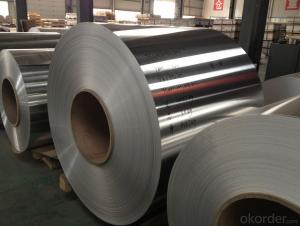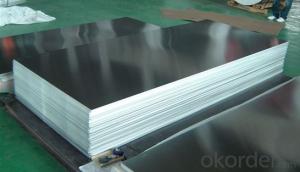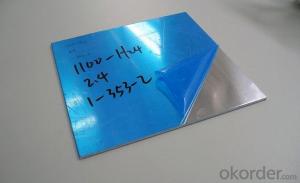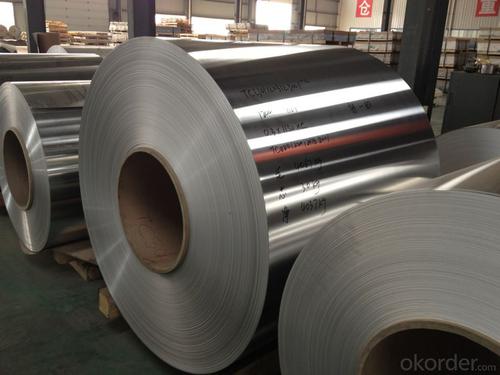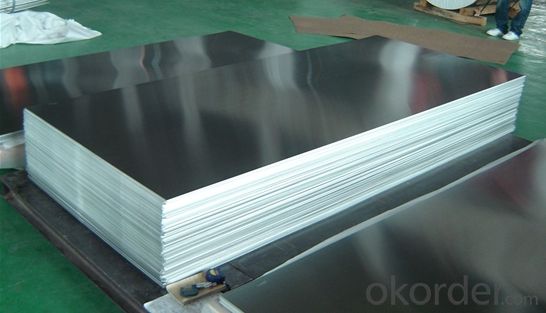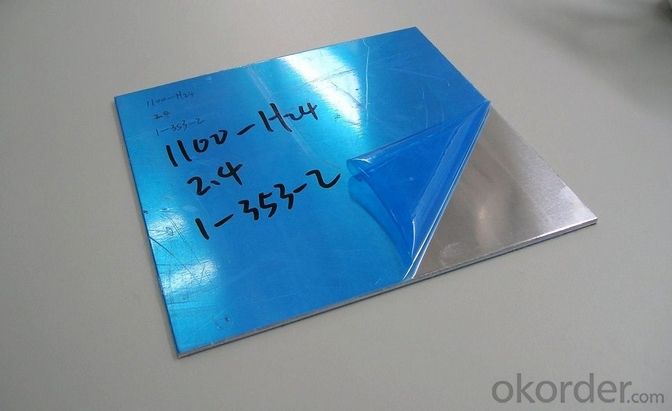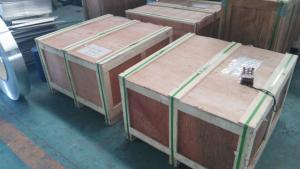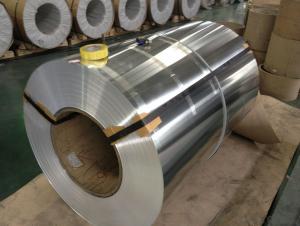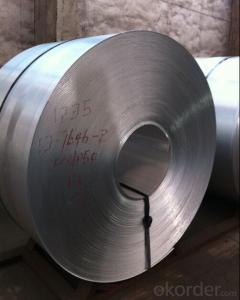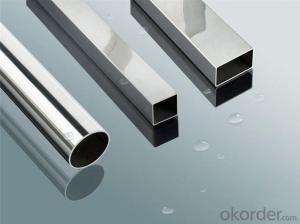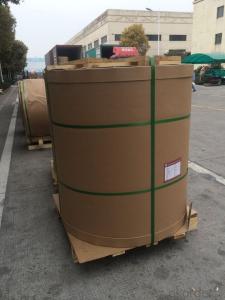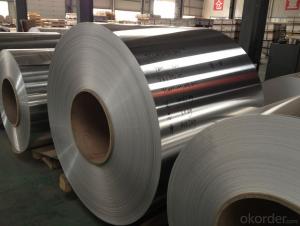Copper Colored Aluminum Sheets - Aluminium Cold Drawn Aluminum Slab Stocks in Warehouse
- Loading Port:
- Shanghai
- Payment Terms:
- TT OR LC
- Min Order Qty:
- 2 m.t
- Supply Capability:
- 6000 m.t/month
OKorder Service Pledge
OKorder Financial Service
You Might Also Like
Specification
1.Structure of Product Description
Cold rolled aluminum sheet is widely used in the field of construction field and decoration field, etc.
There are many different grades, such as: 1000 series, 2000 series,
8000 series5000 series, 7000series,etc. The detailed grade are as follows: 1010, 1050,1060,1100, 2024, 3003, 3005, 3105, 5052,5754,5083,6061,6063,8011, etc.
The temper is include H14, H22, H24, H44,H112, etc.
2. Main features of the product
a.Competitive price
b.Frist-Class Service.
3. Image.
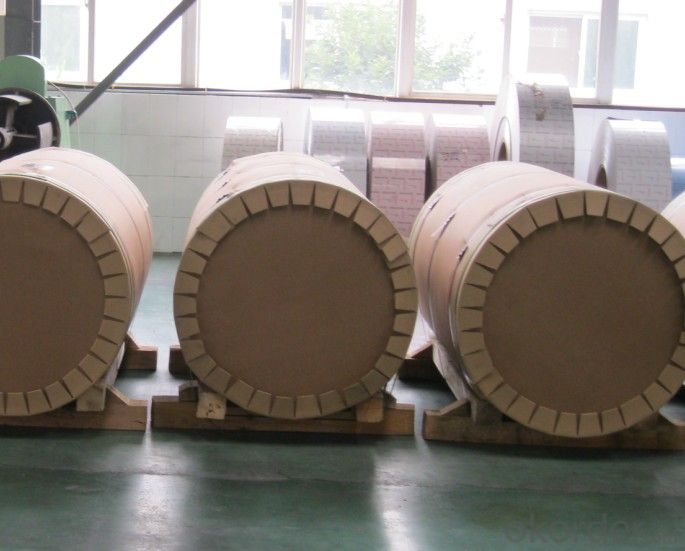
4.Product detailed sizes:
1000mm*2000mm, 1219mm*2438mm,100mm*3000mm, etc.
5. FAQ:
What is the quality standard?
---Usually our standard is GB3880-2006 or others.
What is the width range?
---It is from 150MM to 2000mm, etc.
What is the length range:
---It is from 600mm to 6000mm, etc.
What is the MOQ for your products yet?
---Normally it is around 7tons/each size.
How many tons did you export in one year?
---Normally it is around 600 tons totally.
Where is your client from?
---Normally it is from Fiji,Turkey, UAE, Saudi Arabia, Japan, USA, England,Canada,etc.
What is your mainly products?
---Normally they are cold rolled and hot rolled and cold drawn aluminum sheet,small-5-bar checkered sheet,big-5-bar checkered cold rolled aluminum sheet, mirror finish aluminium sheet,aluminum sandwich panel, aluminum composite panel,etc.
- Q: What is made when Aluminium and Hydrochloric Acid reacts? It makes a dense white smoke with a metallic odour in the gas. Could it be dissolved amounts of Aluminium Chloride or small amounts of unreacted Aluminium in the gas? Or could be that the Chlorine (in equilibrium with HCl and HClO) made chlorates and perchlorates of aluminium that give off odours?Don't tell me the gas isn't supposed to have an odour. I know what diatomic Hydrogen smells like. Nothing. That's the way it should be. But unfortunately, that's not the way it is.
- When aluminum reacts with hydrochloric acid heat is produced as well as aluminum chloride. This heat is warming up the HCl, which you should remember is a gas dissolved in water, a little of which evolves from the water. You're smelling HCl gas. There shouldn't be any dense white smoke, unless you've got an open container of ammonia nearby. In that case the smoke is particulate ammonium chloride, produced by the reaction in the air of HCl and NH3.
- Q: How do aluminum sheets perform in terms of fire resistance?
- Aluminum sheets have excellent fire resistance properties. Due to their high melting point, they can withstand extreme heat and do not contribute to the spread of fire. Additionally, aluminum forms a protective oxide layer when exposed to fire, which further enhances its fire resistance capabilities.
- Q: im about to get a grinder online, and i dont know if i should get an aluminum one, or a non aluminum one. cuz i dont know what non aluminum grinders are made out of. thanks
- they can be made outta plastic or wood, prboably something else..but i can't thnk of it. ive had a plastic 1 and it still worked great..even though it was the ch eapest grinder in the store. so..personal preference really. gl
- Q: What specific criteria or standards must be met when utilizing recycled aluminum in construction?
- <p>Recycled aluminum products used in construction projects must meet specific requirements to ensure safety, durability, and compliance with building codes. These include adherence to ASTM standards for recycled aluminum alloys, such as ASTM B601 for ingots and ASTM B209 for rolled or cold finished products. The recycled aluminum must also have consistent mechanical properties and corrosion resistance comparable to virgin aluminum. Additionally, the products should be free from contaminants that could compromise structural integrity. It's crucial to verify the source and processing methods of recycled aluminum to ensure it meets these standards before use in construction.</p>
- Q: Can aluminum sheets be brushed or satin finished?
- Aluminum sheets have the capability to undergo brushing or satin finishing. Brushing or satin finishing is a method that involves the creation of a textured surface on the aluminum sheets. This can be accomplished by utilizing abrasive materials like sandpaper or wire brushes to generate a pattern of fine lines or scratches on the metal's surface. The purpose of this process is often to enhance the appearance of the aluminum sheets by providing them with a more matte and textured finish. Moreover, brushing or satin finishing can also serve to conceal minor imperfections or scratches on the surface of the aluminum sheets. In summary, the option to brush or satin finish aluminum sheets allows for flexibility in achieving desired aesthetics and surface textures in various applications.
- Q: Can aluminum sheet be used for electrical connectors?
- Yes, aluminum sheet can be used for electrical connectors. Aluminum is a good conductor of electricity and is widely used in various electrical applications, including connectors. It is lightweight, inexpensive, and has good thermal and electrical conductivity properties. However, it is worth noting that aluminum has a lower electrical conductivity compared to copper, which is the most commonly used material for electrical connectors. Therefore, aluminum connectors may have higher resistance and lower current-carrying capacity than copper connectors. Nonetheless, proper design and engineering can overcome these limitations, making aluminum sheet a viable option for electrical connectors in certain applications.
- Q: Our production needs a large number of plating aluminum plate, consult domestic and imported aluminum plate difference?
- Guangdong Huayuan prosperous is the largest aluminum plate supplier 021-56808701, in Shanghai / Tianjin / Chongqing have logistics and storage, domestic aluminum plating surface coating treatment is less than imports, stamping coating is easy to fall,
- Q: Is it suitable to use aluminum sheets as roofing materials in areas with high temperatures?
- <p>Yes, aluminum sheets can be used for roofing materials in hot climates. Aluminum has a high thermal conductivity, which means it can quickly dissipate heat, helping to keep buildings cooler. It also has excellent resistance to corrosion, which is beneficial in areas with high humidity or salt air. Additionally, aluminum is lightweight, easy to install, and can be recycled, making it an environmentally friendly option. However, it's important to ensure proper ventilation and insulation to maximize its performance in hot climates.</p>
- Q: I need help with this question for a report i'm doing, it's about recycling aluminium, please could you give me some reasons why to recycle aluminium and eg.saves energy, and how it does eg. saves energy by...Thanks a lot this will help me loads.P.S this is just a report for my science project.
- Aluminum has to be extracted from the earth which is costly and takes a lot of energy. Then the aluminum needs to be smelted out of the rock that it is in, again this takes a lot of energy and creates toxins. Aluminum like all metals are finite, we conserve resources and the land where they will need to be extracted by recycling it.
- Q: Are aluminum sheets resistant to corrosion?
- Yes, aluminum sheets are highly resistant to corrosion.
Send your message to us
Copper Colored Aluminum Sheets - Aluminium Cold Drawn Aluminum Slab Stocks in Warehouse
- Loading Port:
- Shanghai
- Payment Terms:
- TT OR LC
- Min Order Qty:
- 2 m.t
- Supply Capability:
- 6000 m.t/month
OKorder Service Pledge
OKorder Financial Service
Similar products
Hot products
Hot Searches
Related keywords
